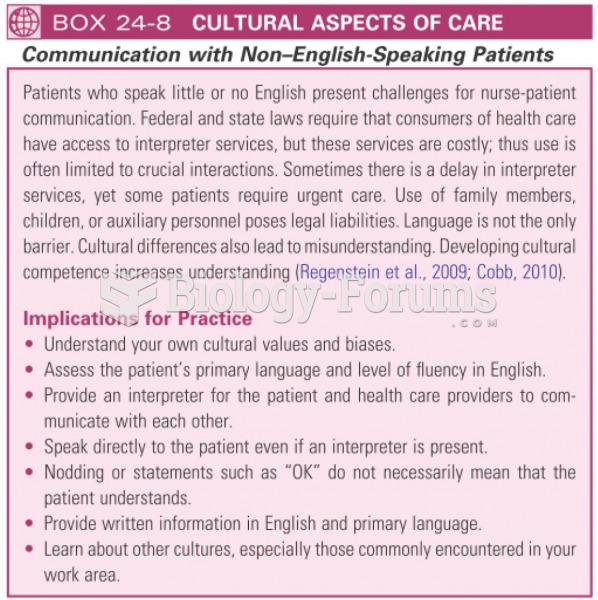|
|
|
Thyroid conditions may make getting pregnant impossible.
Hippocrates noted that blood separates into four differently colored liquids when removed from the body and examined: a pure red liquid mixed with white liquid material with a yellow-colored froth at the top and a black substance that settles underneath; he named these the four humors (for blood, phlegm, yellow bile, and black bile).
Despite claims by manufacturers, the supplement known as Ginkgo biloba was shown in a study of more than 3,000 participants to be ineffective in reducing development of dementia and Alzheimer’s disease in older people.
Everyone has one nostril that is larger than the other.
Blood in the urine can be a sign of a kidney stone, glomerulonephritis, or other kidney problems.







